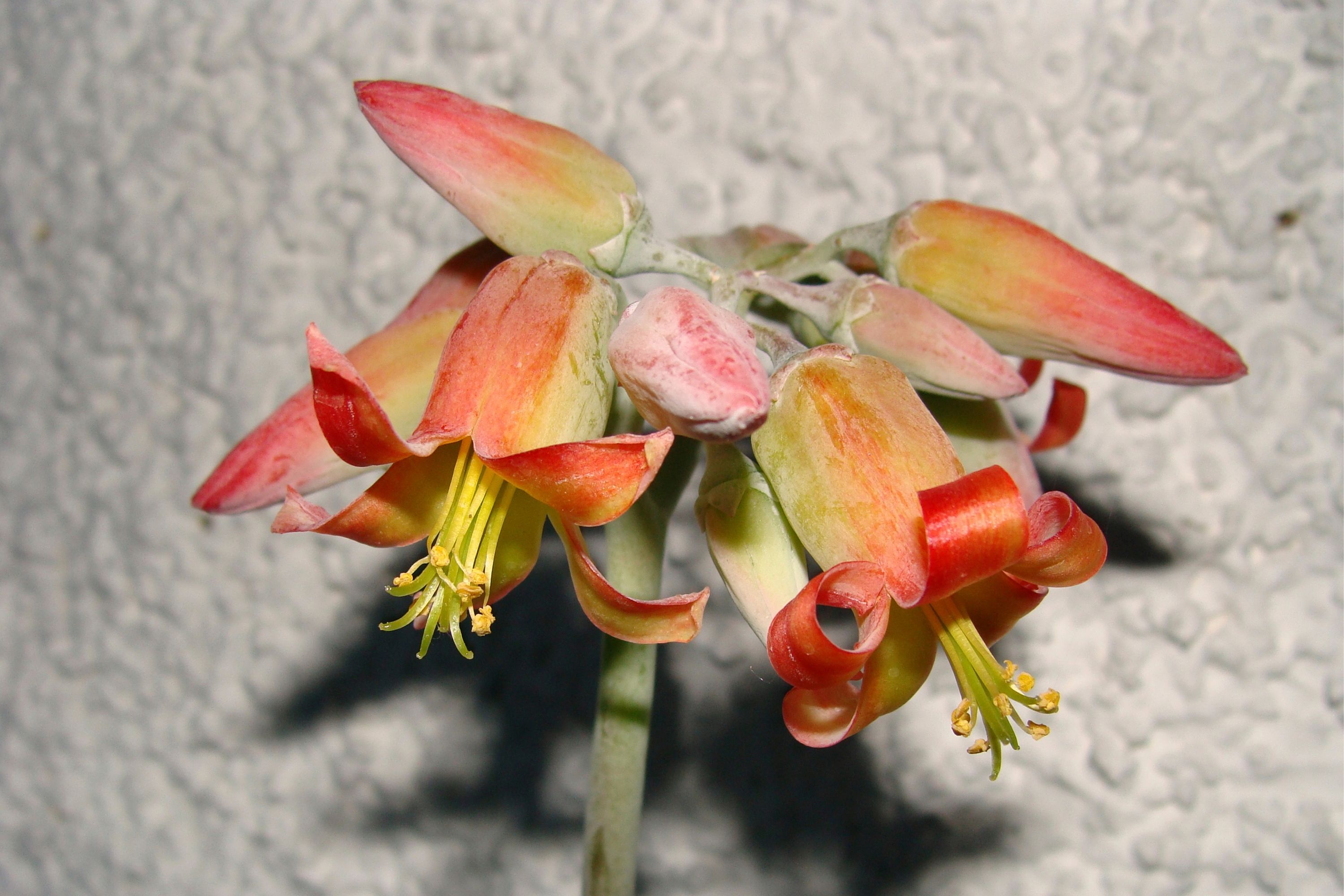Pig's ear plant
(Cotyledon orbiculata)

Description
Cotyledon orbiculata, commonly known as the Pig's Ear Plant, is a succulent plant native to South Africa. It belongs to the Crassulaceae family and is widely grown as a houseplant worldwide. In this article, we will explore the taxonomy, morphology, cultivation, propagation, and uses of Cotyledon orbiculata. Taxonomy: Cotyledon orbiculata was first described by Carl Linnaeus in 1753 in his book Species Plantarum. It belongs to the genus Cotyledon, which comprises around 10 species of succulent plants. The specific epithet "orbiculata" means circular or round, referring to the shape of its leaves. Morphology: Cotyledon orbiculata is a slow-growing succulent plant that can reach up to 60 cm in height and 90 cm in diameter. It has a thick, woody stem that can become corky with age. The stem branches out, forming a rosette of fleshy, oblong to circular leaves that are green or gray-green in color. The leaves are covered with a waxy bloom and can measure up to 15 cm in length and 7 cm in width. They have slightly serrated margins and a pointed tip. The undersides of the leaves are tinged with reddish-purple. Cotyledon orbiculata produces tubular, bell-shaped flowers that are orange-red to yellow in color. The flowers appear on tall, branching inflorescences that can reach up to 60 cm in length. The plant blooms in summer, and the flowers attract bees and other pollinators. Cultivation: Cotyledon orbiculata is a hardy plant that is easy to grow and care for. It prefers a warm, dry, and sunny location and can tolerate high temperatures and low humidity. The plant can also tolerate light frost but needs protection from heavy frost. The soil for Cotyledon orbiculata should be well-draining and sandy. A cactus or succulent mix works well, and adding perlite or coarse sand can improve drainage. The plant should be watered sparingly, allowing the soil to dry out completely before watering again. Overwatering can cause root rot and kill the plant. Fertilizing Cotyledon orbiculata is not necessary but can help boost growth and blooming. A balanced fertilizer with low nitrogen content can be applied during the growing season. Propagation: Cotyledon orbiculata can be propagated from stem cuttings or leaf cuttings. Stem cuttings should be taken from the woody stem and allowed to dry for a few days before planting in well-draining soil. Leaf cuttings can be taken from healthy leaves, removing the leaf from the stem and allowing the cut to dry for a day or two before planting. The cuttings should be planted in sandy soil and kept moist until roots develop. Once roots have formed, the plant can be transferred to a larger pot with well-draining soil. Uses: Cotyledon orbiculata is grown primarily as an ornamental plant for its attractive foliage and striking flowers. The plant is also used in traditional medicine in South Africa to treat various ailments, including burns, headaches, and stomach problems. The leaves and stem of the plant contain a milky sap that has antiseptic and anti-inflammatory properties. In conclusion, Cotyledon orbiculata is a beautiful and easy-to-care-for succulent plant that is perfect for beginner gardeners and succulent enthusiasts alike. Its striking foliage and showy flowers make it an excellent addition to any indoor or outdoor garden.
Taxonomic tree:







